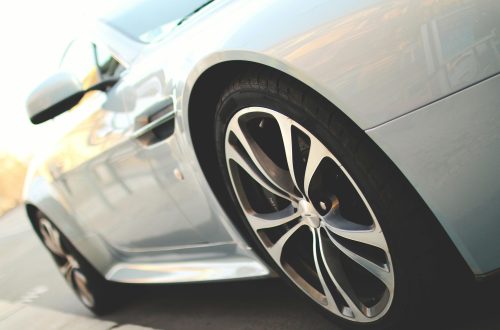
Design & Assign a Private Number Plate to Your Vehicle: The Ultimate Guide to Personalisation
Personalised number plates are a fantastic way to express yourself and to assign a private plate to your vehicle makes it truly yours. Whether it’s for a car, motorcycle, or any other type of vehicle, a number plate is one of the most visible features of your automobile. It’s not just a legal requirement; it’s a unique opportunity to showcase your personality, interests, and even a bit of humour.
In this ultimate guide, we’ll walk you through everything you need to know about designing the perfect personalised number plate that reflects your identity. From choosing a meaningful combination of characters to selecting the ideal number plate holder or 4D Plate, we’ll cover it all.
1. Understanding the Basics of Personalised Number Plates
Before diving into the creative side, it’s essential to understand the basic rules and regulations surrounding number plates in the UK. Personalised plates are typically made up of a combination of letters and numbers, and while there are a few restrictions, the options are nearly limitless when it comes to creativity.
In the UK, number plates must adhere to specific formatting guidelines. The plate’s layout includes:
- A two-letter code that identifies the region or area where the vehicle was first registered.
- A two-digit number indicating the year of registration (e.g., 25 for a vehicle registered in 2025).
- A three-character code which can be personalised.
You can create and assign a private plate that combines your name, initials, favourite word, hobby, or any other significant reference. However, there are certain things to avoid, like combinations that may be considered offensive or inappropriate.
2. Making It Personal: What Should Your Plate Say?
When designing your personalised number plate, think of it as an extension of your identity. It should tell a story or reflect something about you that others will instantly recognise. Here are some ideas to inspire you:
- Your Name or Initials: A simple but effective way to personalise your number plate is to use your name or initials. It’s an excellent way to make it obvious who owns the vehicle, and it can be fun to come up with creative ways to abbreviate your name. For example, if your name is “Elizabeth Johnson,” you might opt for something like “EJ25” or “ELI25.”
- Hobbies or Interests: Your number plate can also reflect your personal interests or passions. For example, if you’re passionate about music, you could choose a plate like “MUS1C” or “ROCK4”. If you’re a sports enthusiast, something like “FC12” for a football club or “RUN4U” might resonate with you.
- Humour or Puns: One of the fun ways to get a personalised number plate is to incorporate a pun or play on words. Plates like “GR8CAR” (Great Car), “LOL23” (Laughing Out Loud), or “CYA2N” (See You Later) can make passers-by smile.
- Memorable Dates or Locations: A memorable date, like the year you were born or a significant event, can work well as part of your number plate. For instance, “1995” or “LDN25” (for London in 2025). Alternatively, incorporating a place name such as your hometown or favourite city adds a personal touch.
3. Making Sure Your Number Plate is Legal
While it’s important to be creative with your number plate, remember that there are some rules and regulations in the UK. To assign a private number plate to your vehicle, it must follow the general formatting rules discussed earlier, and the characters you use must be approved by the DVLA (Driver and Vehicle Licensing Agency).
Additionally, number plates that are misleading or offensive will not be allowed. For instance, using offensive words or symbols could result in your personalised plate being rejected. Always check that the plate is legal before purchasing or customising it.
4. The Choice Between 4D Plates and Traditional Plates
When creating a personalised number plate, you also need to consider the type of plate material and design. Among the many options available today, 4D plates have become increasingly popular for their modern, three-dimensional appearance.
What Are 4D Plates?
4D plates are made using raised characters, giving your number plate a sleek and futuristic look. These plates are created by laser-cutting the characters from acrylic, making them stand out more than traditional flat plates. The depth and texture of 4D plates create an eye-catching effect that attracts attention while still being entirely legal in the UK.
The main benefit of 4D plates is the unique aesthetic they offer. These plates can add a touch of elegance to your car, making it look even more personalised. They’re especially popular for luxury cars and sports vehicles because of their stylish and premium appearance.
Why Choose 4D Plates?
- Aesthetics: 4D plates are far more visually striking compared to traditional flat number plates. The raised, 3D effect creates an elegant contrast that gives your vehicle a distinctive appearance.
- Durability: The materials used for 4D plates tend to be more durable and resistant to wear and tear. This means that your number plate will continue to look great for a longer period.
- Customisation: Since the characters are laser-cut, 4D plates can be made to any font style or design you prefer, adding to their personalisation. This makes them perfect for individuals who want a truly one-of-a-kind plate.
Considerations When Choosing 4D Plates
While 4D plates offer a sleek and modern design, there are a few things to keep in mind before choosing them:
- Cost: 4D plates tend to be slightly more expensive than traditional flat plates due to their custom manufacturing process and high-quality materials.
- Legal Requirements: Ensure the 4D plate complies with the DVLA’s standards, especially in terms of size, spacing, and reflectivity. They must still adhere to the standard number plate rules.
- Visibility: Some drivers may find the raised characters harder to read from a distance. Make sure that your 4D plate remains clearly visible for other road users and law enforcement.
5. The Importance of a Number Plate Holder
When it comes to displaying your personalised number plate, the number plate holder plays a crucial role. Not only does it securely hold the plate in place, but it also complements the overall look of your vehicle.
A number plate holder can come in various styles, materials, and finishes. The right holder should fit your personalised plate perfectly and match the aesthetics of your car. For example, if you’re going for a sleek and modern look with 4D plates, a premium black or chrome holder would suit your plate and car style. Alternatively, if you have a vintage car, a classic frame or leather holder could add a touch of old-school elegance.
6. Tips for Choosing the Right Number Plate Holder
- Material: Choose a material that complements the overall design of your car. Aluminium, stainless steel, or chrome holders are often used for a more modern look. Plastic holders are less expensive and can be suitable for everyday vehicles.
- Fit: Make sure the holder is the right size for your plate. It should secure the plate firmly without any wobbling or gaps.
- Style: There are several different frame styles, from minimalistic designs to ornate ones with logos or brand names. Choose a holder that enhances the visual appeal of your vehicle and your personalised number plate.
7. Final Thoughts: Making Your Vehicle Truly Yours
To design and assign a private number plate to your vehicle is an exciting way to reflect your personality and style. Whether you opt for a name, a hobby, a pun, or a memorable date, your number plate can say a lot about who you are. Additionally, choosing the right plate material, like 4D plates, and pairing it with the ideal number plate holder will ensure your vehicle stands out in the best way possible.
As you embark on your personalised plate journey, remember to keep the legal requirements in mind and ensure your design is both creative and compliant. Once you have your perfect plate and holder, you’ll be ready to hit the road with a unique expression of your identity.
Until next time.




